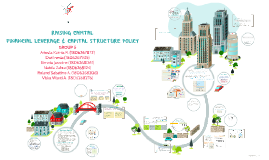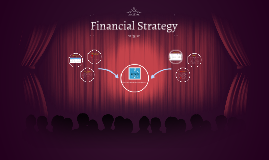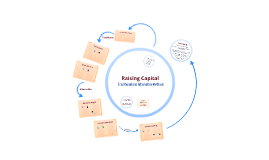RAISING CAPITAL
Transcript: IPO's and Underpricing Issue Costs Taxes and m&m Propotion I the right to go bankrupt is very valuable why : - from an operational standpoint. - to improve a firms competitive positions. Proportionate Ownership In a seasoned issue of stock, the price of the existing stock drops on average by 3 percent on the announcement of the issue. This drop is called the abnormal return. Optimal Capital Structure & The Cost of Capital Plausible reasons for this phenomeon : Right Offering Example Agreements to avoid bankruptcy Optimal Capital Structure If management has superior information about the market value of the firm, it may know when the firm is overvalued. If it does, it will attempt to issue new shares of stock when the market value exceeds the correct value. The weighted average cost of capital is Find EBIT where EPS is the same under both the current and proposed capital structures If we expect EBIT to be greater than the break-even point, then leverage may be beneficial to our stockholders If we expect EBIT to be less than the break-even point, then leverage is detrimental to our stockholders Marketed claims versus nonmarketed claims The Extended Pie Model The Effect Of Leverage Managerial Information Additional new shares = Project cost/Market price = $2,000,000/$5 = 400,000 Shares Outstanding = 1,400,000 ROE = 0.10 NIexpected = ROE x Projected Cost = 0.10 x $2,000,000 = $200,000 Total NI = $1,200,000 THE AFTERMARKET : The period after a new issue is initially sold to the public. For initial public offerings, losses arise from selling the stock below the true value. Liquidation : termination of the firm as a going concern and it involves selling of the assets of the firm E B I T EBIT - Interest Number of rights needed to buy a share of stock = Old shares / New shares Reorganization : is the option of keeping the firm is going concern, it often involves issuing new securities to replace old securities THE GREEN SHOE PROVISION : gives the members of the underwriting group the option to purchase additional shares from the issuer at the offering price. Underpricing EPS = NI/Share outstanding = $1,200,000/1,400,000 = $0.86 Proportion ownership = 5,000/1,400,000 = 0.36% Market price = Price-earning ratio x EPS = 5 x $0.86 = $4.29 (loss $0.71/share) Total book value = $12,000,000 Book value per share (B) = $12,000,000/1,400,000 = $8.57 Stockholders’ wealth can be maximized by maximizing firm value or minimizing WACC 1. Business failure : refer to a situation in which a business has terminated with a loss to creditors. 2. Legal bankruptcy : Firms or creditors bring petitions to a federal court for bankruptcy. 3. Technical insolvency: Technical insolvency occurs when a firm is unable to meet its financial obligations. 4. Accounting Insolvency : firms with negative net worth are insolvent on the books Loss in existing shareholders' value in terms of ownership, market value, book value, or EPS 1 2 3 4 " So the fact that interest is deductible for tax purposes has generated a tax equal to interest payment Market value projected = Market value + Proj. cost + NPV = 5,000,000+2,000,000+1,000,000 = $8,000,000 Market price = $8,000,000/1,400,000 = $5.71 EPS = P/price-earning ratio = $5.71/5 = $1.14 NI = $1.14 x 1,400,000 = $1,600,000 ROE = $1,600,000/1,200,000 = 13% The theory, that a firm borrow up to the point where the tax benefit from an extradollar in debt is exactly equal to the cost that comes form the increased probability of financial distress Liquidation and reorganization Degree of Financial leverage CHOOSING A VENTURE CAPITALIST There are some key considerations in such a case, some of which can be summarized as follows: 1. Financial strength is important 2. Style is important 3. References are important 4. Contacts are important 5. Exit strategy is important " The term venture capital does not have a precise meaning, but it generally refers to financing for new, often high-risk ventures. Individual venture capitalists invest their own money; so-called “angels” are usually individual VC investors, but they tend to specialize in smaller deals. The potential profits are enormous I such cases. To limit their risk, venture capitalists generally provide financing in stages. At each stage, enough money is invested to reach the next milestone or planning stage. The pecking-order theory has several significant implications , a couple of which are at odds with our static trad-off theory : 1. No Target capital structure. 2. Profitable firms use less debt. 3. companies will want financial slack. The Static Theory of Capital Structure _ _ _ _ _ _ _ _ _ _ _ _ _ _ _ _ _ _ _ _ _ _ _ _ _ The intershield tax Gross spread The issuing firm faces a potential cost if the offering price is set too high or too low. If the issue is priced too high, it true market value, the issuer’s existing may be unsuccessful and have to be withdrawn. If the issue is priced below the shareholders will experience an opportunity loss when the issuer

















